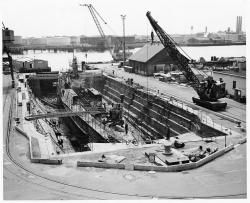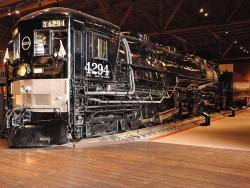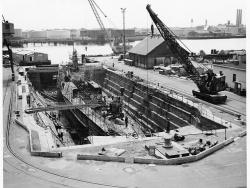While the Erie Canal has become well-known in the annals of American history, the Middlesex Canal, built two decades earlier and a model for canal engineers throughout young America, has only recently become recognized for its important achievements. Extending 27 miles northeast from Boston harbor to the Merrimack River near present-day Lowell, Masachusetts, the Middlesex Canal provided low-cost and efficient freight transport for almost five decades, helping to establish the canal in the U.S. as a viable means of economic development.
Baldwin


The articulated wheel-base steam locomotive represents the final phase of steam locomotive development in size and power. The cab-in-front feature was widely used by the Southern Pacific Railroad beginning in 1909 to alleviate smoke and heat problems for locomotive personnel en route through tunnels and snow sheds. This locomotive, built by the Baldwin Locomotive Works, operated between 1944 and 1956 before being displaced by a diesel-electric locomotive.
Innovations

The articulated wheel-base steam locomotive represents the final phase of steam locomotive development in size and power. The cab-in-front feature was widely used by the Southern Pacific Railroad beginning in 1909 to alleviate smoke and heat problems for locomotive personnel en route through…
Read More
While the Erie Canal has become well-known in the annals of American history, the Middlesex Canal, built two decades earlier and a model for canal engineers throughout young America, has only recently become recognized for its important achievements. Extending 27 miles northeast from Boston…
Read More

